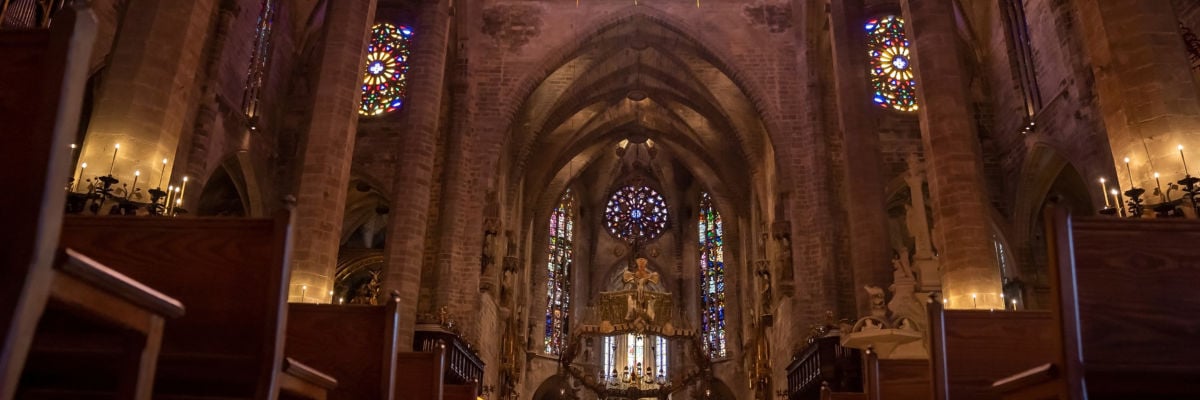
In the United States, in England, and across the developed world, women outnumber men in Catholic churches on Sundays. (Figures over time in the USA can be seen here; a worldwide study can be seen here.) The phenomenon got a mention in Pope St John Paul II’s 1988 post-synodal exhortation Christifideles laici 52: “various sectors in the Church must lament the absence or the scarcity of the presence of men.” Despite this, there seems to be much more discussion of the lapsation of women in the Church, and far more concern is expressed about teachings and liturgical practices that might put women off.
Male Catholics might be forgiven for forming the impression that the Church’s hierarchy and commentariat do not, in general, view their disappearance from Mass as very important. Certainly, there are some voices that seem more eager to use the absence of men as an argument for the ordination of women than to do anything to redress the imbalance.
This month of the Sacred Heart reminds us that the Church is founded on love. This is not maternal love, vitally important though that is, but a specifically masculine, self-sacrificial love, like that of a husband, as St. Paul exhorts husbands, “Love your wives, as Christ also loved the church, and delivered himself up for it” (Eph. 5:25). Christ’s love for us and for the Church, symbolized by his sacred heart, fits into the image of God as a father, and the chosen people as his wife or son, found throughout the Old Testament.
This is just to say that the masculine should not be written out of the Church’s life, any more than the feminine.
It is sometimes said that women are naturally more religious than men, but this is not supported by the evidence. Men are more religiously observant than women in Islam, Orthodox Judaism, and Eastern Orthodoxy, even as those traditions are practiced in the West. On the other hand, the more liberal a Christian denomination is, the more difficulty it has retaining men. The 1936 United States Census (before the relevant questions were dropped) found (see pg. 11) that the sex ratios among religions varied from Eastern Orthodoxy (slightly more men than women) and Catholics (very slightly more women than men) to the other extreme, of Unitarians (1.4 women to every man), Pentecostalists (about 2 to 1), and Christian Scientists (3.19 to 1). Mainline Protestants were in the middle.
It is not difficult to understand what happened. In 1936, Western Catholic liturgy was more comparable to that that of the Eastern churches and had important things in common with the liturgies of Orthodox Judaism and Islam: ritual, solemnity, the use of a sacred language, and so on. The liturgy typically encountered today in Catholic churches has clearly moved in the direction of the female-dominated denominations: it is more spontaneous and emotional; it is not primarily concerned with evoking a sense of the sacred, but a sense of community; and it relies more heavily on verbal communication.
The last point is useful because it allows us to connect this process with another area of research. It is well established that women are more verbally oriented than men: baby girls start talking sooner, girls are less likely to be dyslexic, women score higher in measures of verbal ability, they outnumber men in college foreign language departments, and so on. Men rely more on, and are often more comfortable with, non-verbal communication.
Evidently, the liturgical traditions of Islam and Orthodox Judaism, which use chant and sacred language (ancient Hebrew and Classical Arabic) not readily understood by most worshipers, are not primarily concerned with getting their message across by means of verbal communication. Instead, though their texts, postures, clothing, and ceremonies, they raise heart and mind to God by creating a sacred atmosphere and a feeling of historical continuity, and by the worshiper’s sense of inward, intentional participation in the act of worship. The same can be said for traditional religions from all over the world, including the Eastern churches and the traditional Latin Mass of the Western church. They are all examples of effective non-verbal communication.
The liturgical alienation of men has been an unfortunate unforeseen consequence of theological fashion. As the Jesuit sociologist (and theological liberal) Patrick Arnold expressed it, “as liberal religion stresses increasingly the immanent and ‘horizontal’ dimension of faith to the exclusion of the transcendent and ‘vertical’ reality, it inadvertently ignores the voracious appetite of men for the Great, the Wholly Other, and the Eternal” (pp. 77-78).
Some attempts to get men back to Mass have successfully used male-friendly retreats and group activities, only for the men involved to discover that when they do return to church, it is just as male-unfriendly as before. Others attempt to create a sense of religion as something tough and masculine, solely by berating and humiliating men and blaming them for all the problems of the Church. Those who try this need to understand that men are already given far too much of an impression that they are “toxic” and unwelcome.
What is needed for men to return to their places in Mass is for them to find a congenial atmosphere and a compelling message. This is not going to happen if the sanctuary looks like an almost exclusively feminine zone, if Mass lacks dignity, and if spirituality is presented as all about sharing our feelings with strangers. Indeed, it is quite clear to most priests, I suspect, what changes they could make to their churches, parish activities, and liturgies that would make them more masculine, and I doubt most female Catholics would object, especially if they saw the results. Nevertheless, there seems to a psychological barrier against doing anything along these lines. Anything male-friendly seems to be understood as traditionalist, rigid, and even misogynistic.
I don’t think Catholic women want a Church without their husbands, fathers, brothers, and sons. The Church needs to appeal to both sexes.



